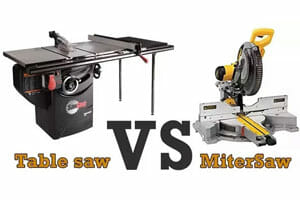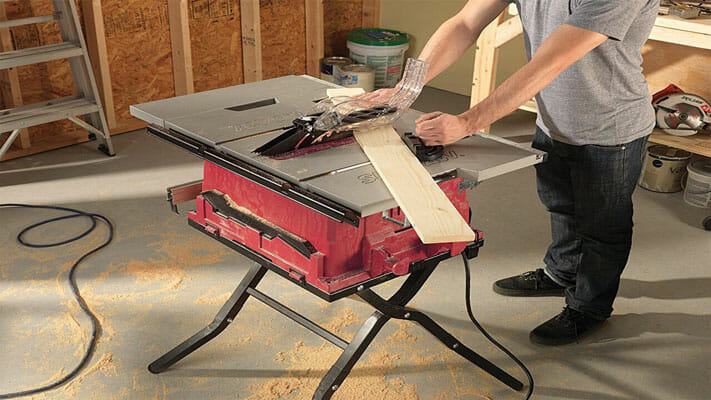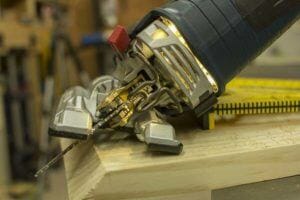The saw is a classic example that we all stick with the basics. Why is that? It is because ever since the old days, saws have been used in a lot of things. Even now, we still use saws, but they now come in many forms. With the variety of saws that we have, can you tell which saw to use? Table saws, hacksaws, what are their differences, really?
As we all know, saws are specialized cutting tools that come in many shapes, names, and sizes. Not only that, each saw has a specific use that will make whatever it is you are cutting easier. Therefore, you should be familiar with their uses so you can also use them properly. What is worse than using the wrong saw is utilizing it in the wrong way because this might lead to broken piece and much worse, accidents.
With that said, let us take a look at the types of saws. We are also going to provide pictures so that they will be easier to distinguish. More than that, we are going to talk about their specific use. Are you ready to know how to use a specific saw properly? Then keep on reading!
The Two General Types of Saws
In general, there are two types of saws. The first one is the hand saw and the second one is the power saw. These two types are the same in such a way that they are used for a lot of cutting purposes. On the other hand, their biggest difference is how their power is wielded. For the hand saw, you use sheer manual power, while for the power saw, some are battery operated or plugged into a power outlet.
Let us talk about each general type briefly.
1) Hand Saw
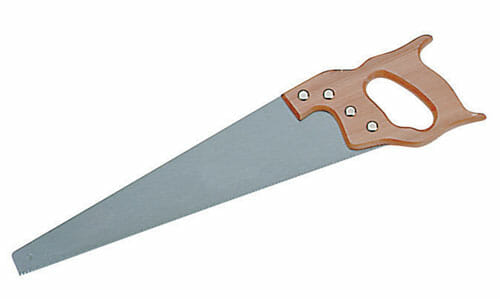
These can also be called as panel saws. Its main purpose is to cut wood and cut it even further into smaller pieces with different shapes. At the same time, it operates by having a lot of sharp points and place pressure against a certain wood that you are planning to cut. This type of saw has been used by woodworkers of the old days, dating back as old as the time of the ancient Egyptians.
2) Power Saw
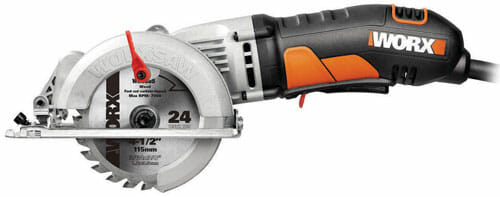
Coming from its own name “power,” this one is actually just a hand saw in steroids. Therefore, it packs a lot of power that can cut through a thicker piece of wood in no time. This is the reason why a lot of people prefer using power saws because they are not an inconvenience. Some types also have a feature that will cut the wood straight for you. Indeed, if you are not really that handy or you lack time in building something, a power saw will be a good addition to your building tools.
Important Thing to Know
In choosing a type of saw to buy, you should take note of its teeth. By teeth, we are talking about the sharp points of your saw. Most saws are rated by teeth per inch which is called TPI. These ratings are from two to 32.
Just keep in mind that those with lower TPI numbers tend to cut quickly but they produce cuts that are a bit rougher. On the other hand, if the TPI rating is higher, this means that it will cut a bit slower, but it will produce a smoother and finer cut. Therefore, you can base it on the TPI rating depending on the type of wood and design that you want.
The Types of Saws
Let us now go over the types of saws, starting with hand saws.
Hand Saw: The Different Types
1) Back Saw

This is a short saw which has a blade that is narrow. Further, this blade is reinforced through the upper edge. Usually, it is used along with miter boxes and for those that need a fine, straight, and consistent cut. They can also be called as tenon saws or miter saws, although it is still based on the design and use.
2) Bow Saw

This type of saw is usually used outdoors. This is the case because it is used to prune stems and leaves, trim trees, and cut logs. More than that, it has a long blade which has a lot of teeth that are crosscut. By having this type of design, it has the ability to remove material while it is pushing and pulling. Further, it can also be used for rough cuts.
3) Coping Saw
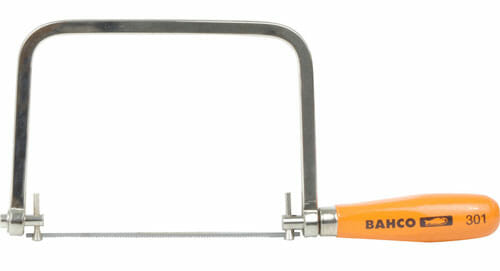
For this type of hand saw, it is great to be used for scrolling, trim work, and type of cutting that needs a lot of intricate cuts and precision. The blade for this saw is perfect for those because it has a thin and narrow blade. Moreover, it cannot only be used on wood, but it can also be used on different materials. For sure, plumbers, carpenters, and even toy and furniture makers have this kind of saw in their tool kits.
4) Crosscut Saw

The blade of the crosscut saw is thick paired with beveled and large teeth. This is why it is great to be used on rough cuts for wood and trimming branches and limbs. There are also two-man crosscut saws or felling saws that has a handle of every end so two people can use it at the same time. This particular cut is also perpendicular against the grain of the timber.
5) Fret Saw

This is usually mistaken for a coping saw because they somehow have the same blade. But this one actually has a long and a larger frame which can help with cutting farther than the outer edges. At the same time, it can still be used in cutting intricate cuts. On the underside, it can be difficult to do scrollwork that is intricate because its blade cannot be rotated. Meaning, it can be hard to do cutting positions and the work is more tedious.
6) Hacksaw

As for the hacksaw, it is one of the most popularly known hand saw. It is great to be used on cutting tubing and pipes. More than that, it can also be used to cut wood, plastic, metal, and other materials. Therefore, it can be concluded that this saw is very versatile. Further, its usual tooth count ranges from 18 to 32 for every inch.
7) Japanese Saw
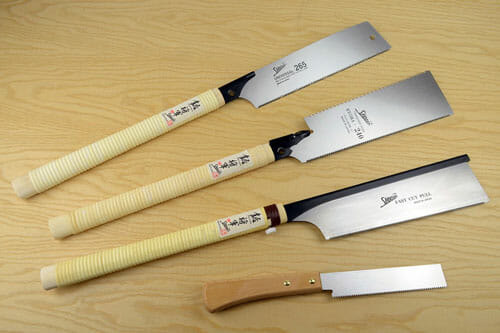
This saw has a single handle, as for its blade, it has a strong and protruding thin blade. Do not mistake it for a backsaw because this one can reach more places that a backsaw will fail to reach. Further. There are three types which are kataba, ryoba, and dozuki. However different these three types are, they can still cut both soft and hard wood with a high regard for precision.
8) Keyhole Saw

For this one, it has a rounded handle that has a protruding single blade coming from the top of its handle. It is mostly used to cut rough patterns and circles. In addition, it can be used on drywall if there are those cases when a small section has to be replaced or removed. Also, it is used when that specific area cannot allow the use of tools that are powered.
9) Pruning Saw

For a lot of prunings saws, they have a curved blade that is 13-15 in. All of which is attached to a protruding single style handle that is called as a pistol grip. As for the blade, it has coarse and wide teeth which can cut on either direction so that the removal of material is significantly faster. A lot of landscapers, tree surgeons, and the likes use this tool.
10) Rip Cut Saw

A lot of people refer to this saw as simply a hand saw. However, it is well known for being used for a lot of framing jobs. Its teeth have a few inches in between but they are sharpened into a fine point which is great for removing wood. There are also varying lengths which work well to a different kind of wood that needs to be cut.
11) Veneer Saw

We now move on to another specialized saw which was designed specifically to be used on veneer work that needs a lot of precision. As for its blade, it has a double-edged short blade that has an estimated 13 teeth for every inch. It has a short blade so that it can also be used on other easy cutting work.
12) Wallboard Saw
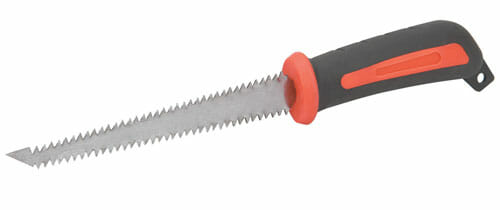
This one looks a lot like a keyhole saw, but it is actually a bit shorter. At the same time, it has fewer teeth for every inch and has a wider blade. Further, there are certain releases that come as double-edged. It is best to be used on drywall or paneling. Also, it is mostly used to make the starter holes if you are going to use tools that are powered.
Power Saw: The Different Types
13) Stationary Band Saw

We are starting off with a floor-standing saw that is also tall and makes use of large pulleys at its top and the bottom of the cutting table. This is its design so that it will be easier for it to continuously move its band of fine teet through the cutting process. At the same time, it is great for cutting tubes, PVC, and pipes. Further, it can also do curves on wood. A quick note, it can only cute a bit shallow on different materials other than wood.
14) Portable Band Saw
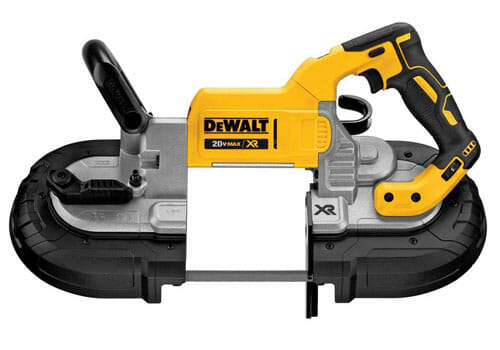
This one is a smaller unit compared to the stationary one. However, that does not mean that it is weaker. In fact, it can also do the same things that the stationary unit can do. The only difference is, you can take this one with you. On the flip side, as it does not have pulleys, it may be harder to make straight cuts with it. Also, the inches that it can cut into are a bit shallow, approximately three to four inches when we are talking about different material from wood.
Check our guide about best band saw
15) Chain Saw

We are all familiar with this one, thanks to the Chainsaw Massacre series. But movie reference aside, this is a tool that has a lot of ripping teeth that are attached to a linked chain. More often than not, they are used for cutting down trees and splitting already cut wood in half.
16) Chop Saw

Chops saws are actually one of the largest types of circular saws that are portable. This type of saw can both be manufactured in masonry cutting or metal versions. At the same time, it features a connected water line so the the dust will be reduced while it is cutting. As for the blades, they have special abrasives that are specially designed for the specific material that you are about to cut.
17) Circular Saw

A lot of people call this a buzz saw, but this one makes use of a blade that is toothed with at least seven to nine inches in terms of diameter. It is a very versatile powered saw because it can cut through a lot of different material like wood, plastic, masonry, metal, and many more.
18) Compound Miter Saw

This is your jacked up miter saw. Why is that? It is because it can produce a miter, compound, and straight cuts. Unlike a miter saw that cuts while it is turning up and down, the blade of this one is put on a mounted arm which can be adjusted to different angles. Further, it can be used in cutting complex trim and scrollwork. It can also be a time saver because it works fast especially when you add moldings to the crown or trim windows.
19) Flooring Saw
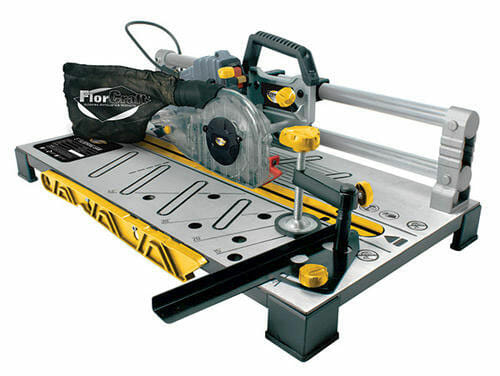
This is a saw that is meant to be used for flooring that needs to be re-sawed. This includes bamboo, laminate, engineered, or hardwood floors. At the same time, it can be used instead of a miter saw, table saw, or other saws that can be used in flooring. The greatest advantage of using this is that it is very portable. So, it will move with you as you replace your flooring.
20) Jigsaw

This is a saw that is handheld and has a fine-toothed and short blade. Accordingly, it moves up and down at different speeds depending on your setting. This is one of the specialized saws that you can use to cut curves and other lines that are not straight. If you are planning to buy one, choose one that has a long cord or even a cordless one.
Read also our reviews about best jigsaws of 2020.
21) Miter Saw
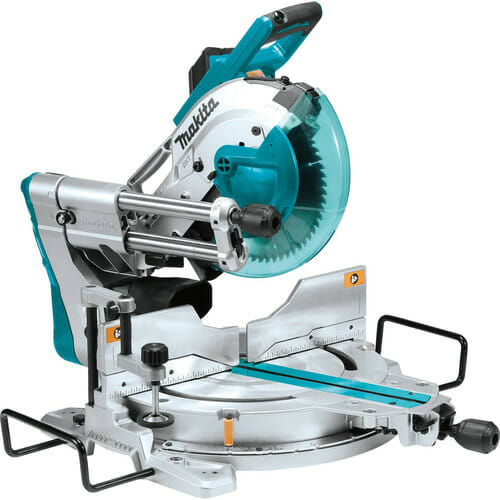
This one was specifically designed to mimic that of a hand saw, only in a very powerful way. Therefore, it is great to be used on trim jobs, and other jobs that need precise angle cuts and measurements. At the same time, it can turn for up to 45 degrees on both if its sides in order to make a 90-degree cut. Further, it can be used with tables that are for cutting mitered ends that are long.
22) Radial Arm Saw
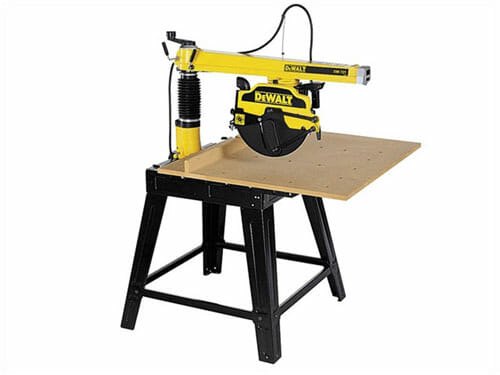
This saw will make it possible for you to make the same miter cuts, compound cuts, and many more. This is done by putting the blade and the motor on an arm which can extend to the cutting table. Design vary based on the manufacturer but definitely, the saw blades of a radial arm saw can be exchanged with that of a circular saw blade. Just make sure to check the right speed when it comes to spinning because they tend to spin very fast.
23) Reciprocating Saw

As for this one, it works pretty much just like the jigsaw in such a way that it can move back and forth in a fast way. This can be used in cutting wood, tubing, and plastic. More than that, it is also used for cutting underneath wood joints or walls because it can cut through a nail in the wood, as well as the wood itself. Therefore, this one is great to be used when you are doing demolition jobs.
24) Rotary Saw
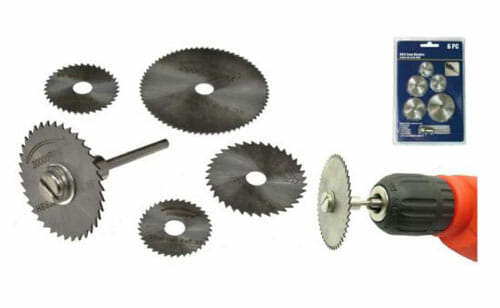
It used for a lot of projects, may it be for crafts or construction. Moreover, it is characterized by having a fixed blade and a handle that is a small screwdriver type. It is best used for cutting through walls and other instances for repairing. Just like the keyhole saw, it is great to be used on paneling, drywall, and a lot of other cutting jobs that are smaller.
25) Scroll Saw
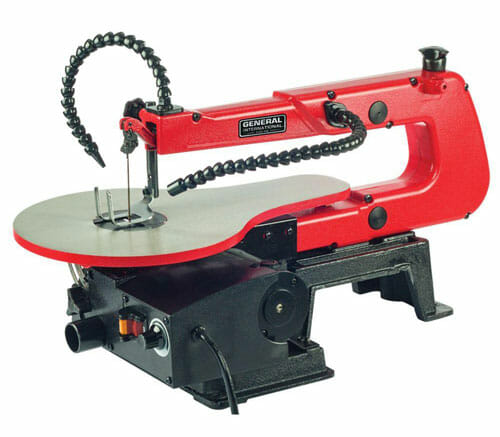
This has three operations, the first one being with a reciprocating blade, the second one is with a band, and the third one is with a continuous blade. Just like the coping saws, it is specifically designed for spiral lines. Scrollwork, and patterns that tend to be on the intricate side. This time, it will be easier to do so due to the use of a cutting table where you can achieve calculated detail and precise rotation. If you are after making curves that have edges, this is a great tool to use.
26) Table Saw
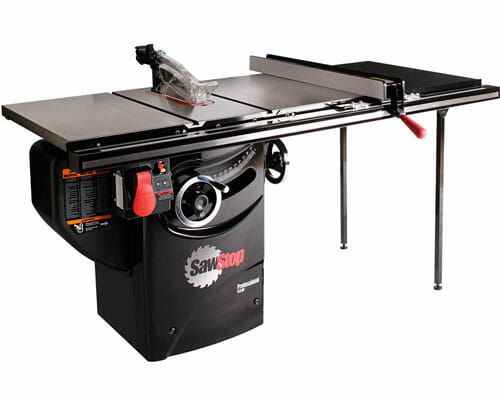
For this one, it has a bit of a larger blade than that of a circular saw. At the same time, it has a speed mounter which mounts underneath a flat table and it is also high powered. If you want to adjust the depth of the cut, what will happen is that the blade will rise up from the cutting bed. Therefore, it is ideal to be used when you want to make a lot of rip cuts or if you want to prepare a big batch of pieces that are identical in size. Further, it is compatible with masonry and metal blade, but take extra precautions because the blade design might not work well with the speed or rpm of the current motor that you have.
Summary
There are a lof saws to choose from in the market right now. But what can make it an easy choice is for you to determine your specific purpose. However snazzy and unique a feature is at your saw of choice, all of that will be useless if you really cannot use it to your current cutting project. At the same time, take note of the basic features that your choice has, make sure that it can also somehow be used for cutting jobs that might present itself in the future.
Another thing to note is the compatibility of switching out blades. As we have discussed earlier, the blades can really be interchangeable, but that does not necessarily mean that you can use it right out of a whim. You also have to check if the blade that you are going to change works well with the speed of the motor of your current blade. If you fail to do so, chances are the blade might spin out of control and you are left without fingers. Yikes!
If you are in doubt, then start with hand saws first. This tip is great for beginners who are just starting out with home construction or projects. Once you have mastered simple hand saws, maybe that is the only time to move to powered ones. Keep in mind that however convenient a powered saw is, it still has a lot of power in it that you should properly wield. If you cannot handle its power, then you might end up breaking it, or much worse meeting an accident.
With that said, go and find the saw of your dreams. The 26 saws that we discussed are not just the only ones, there are still a lot of other types. But for you to not be confused, you can start with the ones that are in this list.

